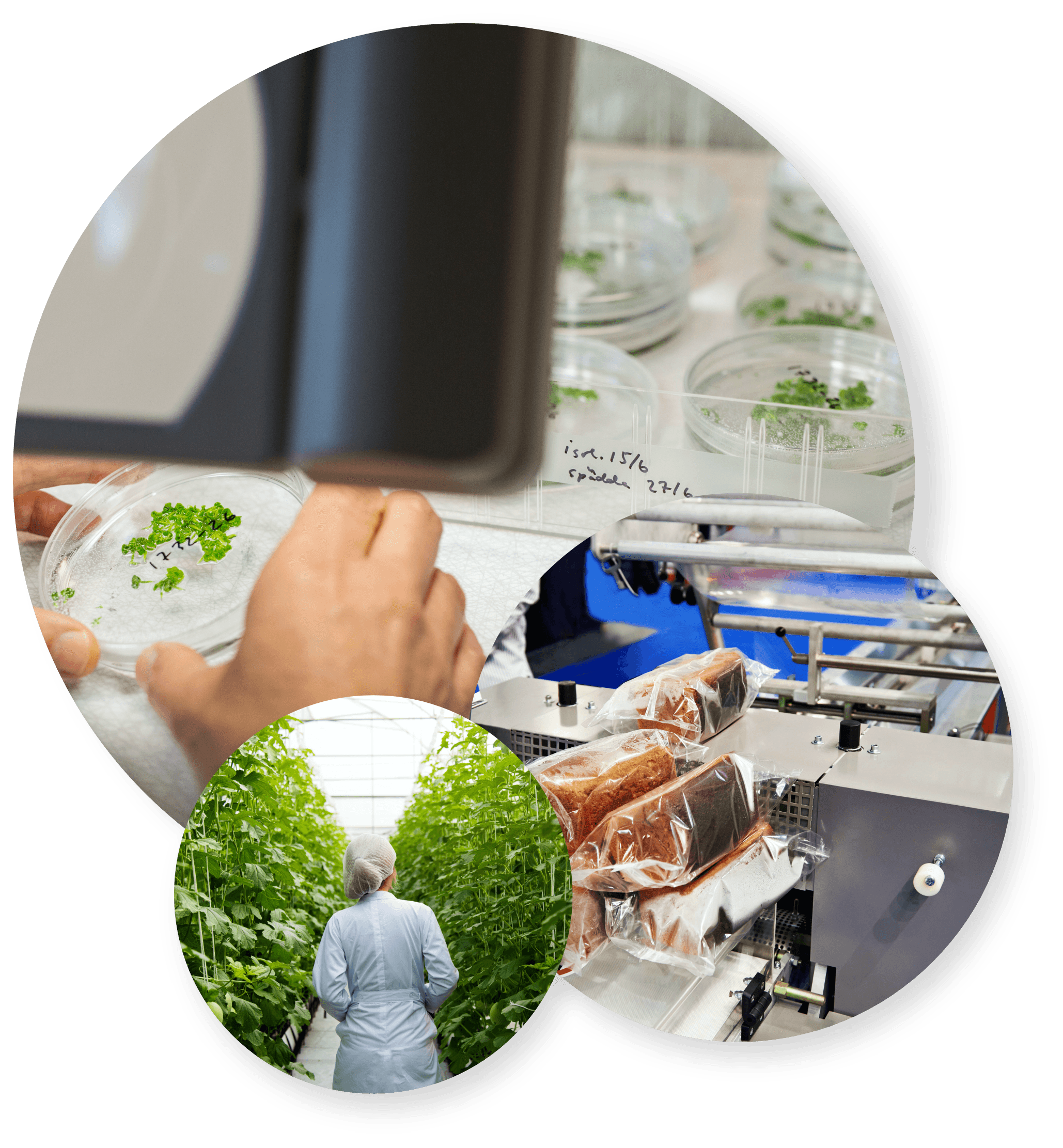In 2030, there are 50 new Swedish food innovations generating a total turnover of 1 billion euros.
Swedish food innovation was given a boost during the 1990’s, when the combination of food and health and the hope of being able to market foods using health arguments attracted both creativity and capital. Innovations such as Oatly, ProViva, oat fibre concentrate, and cholesterol-lowering margarine were born. In a market characterised by tradition and gradual change, it takes courage to develop foods and concepts that are both innovative and have great market potential. Because competition is fierce – four out of five new products do not survive their first year on the market.


In 2030, there are 50 new Swedish food innovations generating a total turnover of 1 billion euros.
Swedish food innovation was given a boost during the 1990’s, when the combination of food and health and the hope of being able to market foods using health arguments attracted both creativity and capital. Innovations such as Oatly, ProViva, oat fibre concentrate, and cholesterol-lowering margarine were born. In a market characterised by tradition and gradual change, it takes courage to develop foods and concepts that are both innovative and have great market potential. Because competition is fierce – four out of five new products do not survive their first year on the market.

LEADING INNOVATION SYSTEM
To meet this challenge, the value chain requires a world-leading system for innovation. The system must include new innovation models that shorten the path from identified need to finished product. The best conditions for this are created in strong innovation clusters that, through cross-border collaboration, provide conditions for growing companies throughout the value chain. Access is needed to both testing and pilot facilities and especially small companies and start-ups need access to small-scale production facilities and test markets.
The Swedish collaboration model, which links research, businesses, the public sector, and the non-profit sector can continue to be developed and utilised effectively to create the necessary transformation of the food system. Part of this is public procurement of innovation.

INCENTIVES FOR DEVELOPMENT
One way to achieve this is to create strong incentives for the development of products and production systems with a more positive impact on health and the environment. This includes identifying and managing regulatory frameworks that inhibit innovation and developing and applying new knowledge and insights as well as new methods for managing systems that promote innovation.

ATTRACTIVE INVESTMENTS
Through increased external interest in the industry, we will also attract more investments and venture capital. Traditionally, established food companies account for the absolute largest share of the venture capital that goes to innovation and upscaling. By creating and highlighting the success of Swedish food innovations, the Swedish food industry will also be made into an attractive sector in which to invest.

NEW BUSINESS MODELS
An important aspect of the innovation process is also to develop new business models in order to realise the real potential of the innovations. This involves developing new value chains and meeting consumer needs with new service-based models that also offer new value-based payment models. The goal is to develop sustainable business models that ensure the preservation of relevant values created throughout the value chain.

PRIDE AND ATTRACTIVENESS
A crucial aspect of the innovation system is to be able to attract the best talent. It is about increasing pride and attractiveness within the industry by communicating that we are an industry of the future. An essential part is communicating the added values and success of Swedish foods and thereby creating pride in the industry, where success breeds success.
CASE
Oats as a success factor
The 1980’s medical discovery that oat beta-glucans could lower cholesterol levels in people with elevated levels, along with the Japanese innovation of FOSHU (Food for Special Health Uses or Functional Foods), focused the interest of both researchers and product developers on food and health. With plenty of oats in Sweden, several ideas and innovations emerged around this raw ingredient.
In the university town of Lund, Professor Richard Öste had been studying lactose intolerance, and with the increased knowledge of oats, he came up with the idea of developing a Swedish oat drink that, in addition to being a Nordic alternative to soy drink, also turned out to have a documented effect on cholesterol. Together with three research colleagues and the foundation SL-Stiftelsen, he developed an oat base, and the researchers and Skånska Lantmännen formed a joint development company called Ceba AB.
The first product was a weight loss product in soup form, Complätt, which was developed together with Friggs, then part of Procordia Food. After a successful clinical study, the product was launched in 1994. Simultaneously, the company also developed a lactose-free drink called Ica Solhavre for the food retailer Ica, which, like Complätt, was produced under licence for many years. Ceba’s first own product was Mill Milk, which was launched in the UK market in 1995.
In the late 1990’s, Oatly was launched in Sweden – a venture that became so successful that the company ended up adopting the product name as its own. But it would be another ten years before the real success came through a shift to lifestyle marketing well in line with an increased interest in vegetable products. In 2019, the company’s sales reached almost SEK 2 billion.


